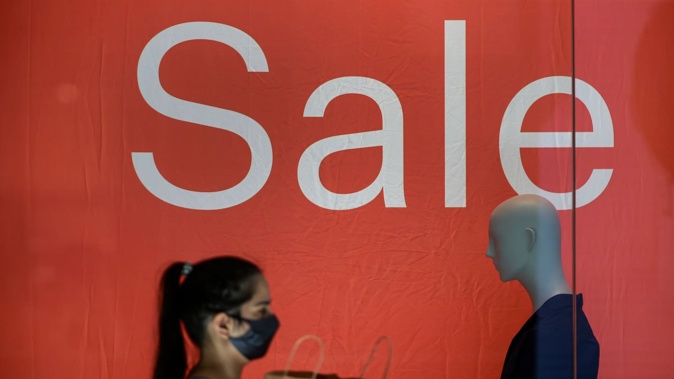
Card spending by Kiwi consumers fell in March, with most measured categories reporting declines when compared to February, Stats NZ data have revealed.
Spending in the retail industries decreased 0.8% ($52 million) in March 2025 compared with the month prior, while spending in the core retail industries also decreased by 0.8% ($46m).
Looking at the categories, durables reported the largest decline month-on-month, dropping by 2.5% or $39m.
Shoppers also spent less on fuel, likely because of seasonal factors, and apparel, dropping by 2.3% ($12m) and 2.1% ($6.9m) respectively.
Hospitality also reported a drop in spending, down by 1.1% or $14m.
The category with the largest increase in March compared with February was in motor vehicles (excluding fuel), where spending grew by 2.1% or $4m.
Consumables also reported a minor increase, with spending in the category up by 0.4% or $9.5m.
Services, including repair and maintenance, personal care, funeral and other personal services reported minor spending growth of 0.3% or $1m.
Spending in the non-retail (excluding services) category decreased in March, down by 3.3% or $7.6m compared to February.
That category included medical and other healthcare spending, travel and tour arrangements, postal and courier delivery and other non-retail industries.
The total value of electronic card spending, including the two non-retail categories (services and other non-retail), decreased from February by 1.5% or $137m.
In actual terms, card holders made 169 million transactions across all industries in March 2025, with an average value of $54 per transaction.
The total amount spent using electronic cards was $9.2 billion.
March quarter
Stats NZ also reported the data for the wider March quarter compared to the December quarter, in which spending in the retail industries increased by 0.7% or $131m and spending in the core retail industries also increased by 0.4% or $74m.
Spending on motor vehicles (excluding fuel) and fuel itself both reported the highest spending growth for the quarter, increasing by 1.6% or $9m and 1.3% or $20m respectively.
Consumable spending also grew over the quarter, with Kiwis spending 0.8% or $65m more compared to the December quarter.
Durables reported the largest spending decline in the quarter, dropping by 2.5% or $118m.
In unfortunate news for the hospitality industry, it also reported a decline over the March quarter of 0.5% or $18m.
Apparel spending was virtually flat for the quarter, down by 0.1% or $0.7m.
The non-retail (excluding services) category was down by 0.6% ($44m) for the March quarter, while the services category was up by 1.9% ($21m).
The total value of electronic card spending, including the two non-retail categories (services and other non-retail) was flat, growing by 0.1% or $23m when compared with the December 2024 quarter.
Momentum stalled
Westpac senior economist Satish Ranchhod said the results were much weaker than expected.
“We had expected a modest 0.2% gain, in line with earlier trends. March’s fall in retail spending was widespread across discretionary spending categories,” Ranchhod said.
“The only major category to record an increase this month was grocery spending, which was up 0.4%. However, the past few months have also seen large increases in the prices of many grocery items.”
He said that looking at the wider trends of the economy, it appears to have lost some momentum, noting that core spending (excluding fuel) has essentially remained flat since the start of this year.
Ranchhod also said that in discussions he has had with retailers around the country, he’s continued to hear about sluggish sales, with cost-of-living pressures a continued drag on spending.
“Today’s soft result reinforces our expectations that the broader recovery in the New Zealand economy will remain gradual in the near term.
“As we’ve previously highlighted, 90% of New Zealand mortgages are on fixed rates and many borrowers are still on relatively high rates.
“Over the next six months more than half of all mortgages will come up for refixing and many borrowers will roll on to lower rates, which will help to boost spending through the latter part of the year.”
Tom Raynel is a multimedia business journalist for the Herald, covering small business, retail and tourism.
Take your Radio, Podcasts and Music with you









